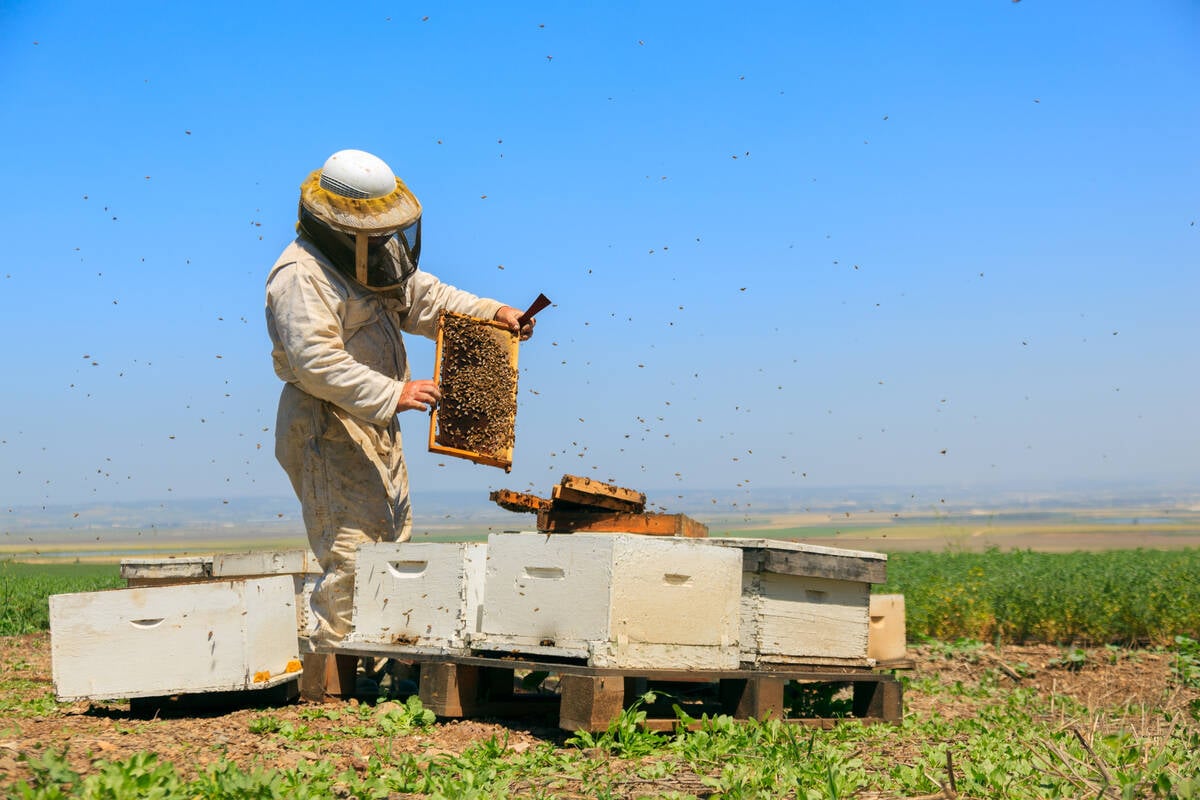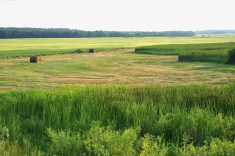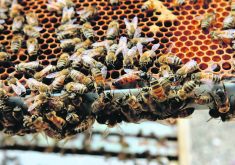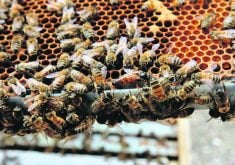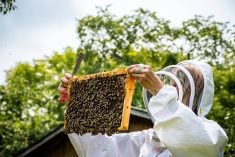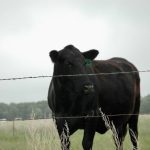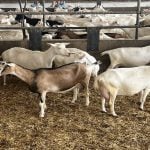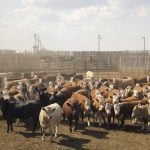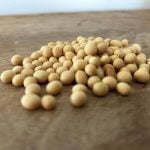Manitoba’s honey sector is getting some relief as the province’s agricultural insurer expands winter bee loss coverage.
In an Aug. 27 post to the social medial platform X, the Manitoba Agricultural Services Corporation pointed to new 2025 changes to the Overwinter Bee Mortality Insurance program.
The most significant change expanded coverage from being based on 90 to 100 per cent of a beekeeper’s overwinter colonies, said Danielle Modrzejewski, corporate communications manager with MASC.
Read Also
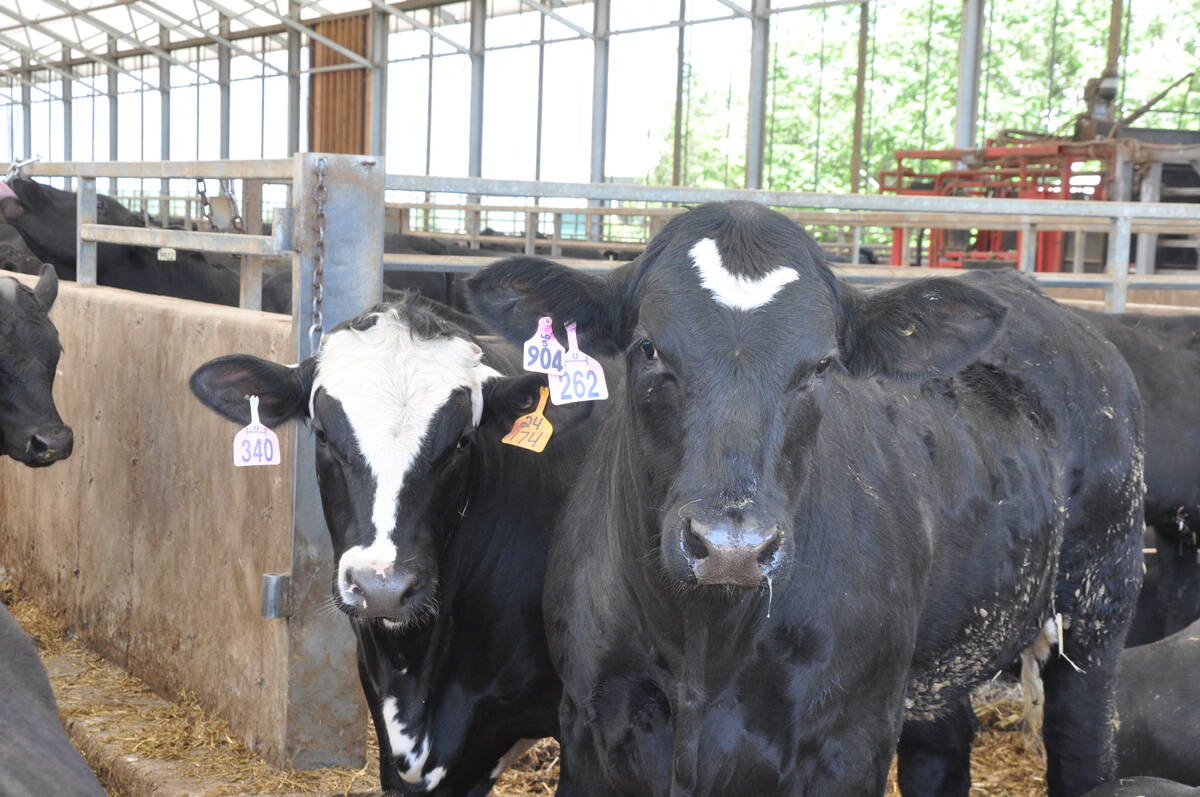
Beef-on-dairy makes cattle market ripples
Beef-on-dairy calves are popular, but an economist flags potential market risks from that popularity. The Canadian veal industry has already felt them.
“Coverage is now based on 100 per cent of the number of overwinter colonies multiplied by the survival rate (previously 90 per cent),” Modrzejewski said in an email to the Co-operator. “The coverage increase is the biggest ‘need to know’ for producers this year.”
WHY IT MATTERS: Years of bad bee stock losses have led to financial strain and a scramble for solutions in the beekeeping sector.
Under the new scenario, a beekeeper insuring 100 colonies at the high dollar value of $310 per colony and with a historical survival rate of 66.7 per cent would be covered for up to $20,770, compared to $18,600 under the previous coverage model.
Multiplying the 100 colonies with the survival rate produces a rounded colony number (in this case, 67). That rounded colony number is then multiplied by the chosen coverage level ($310) to come up with the final insured dollar amount.
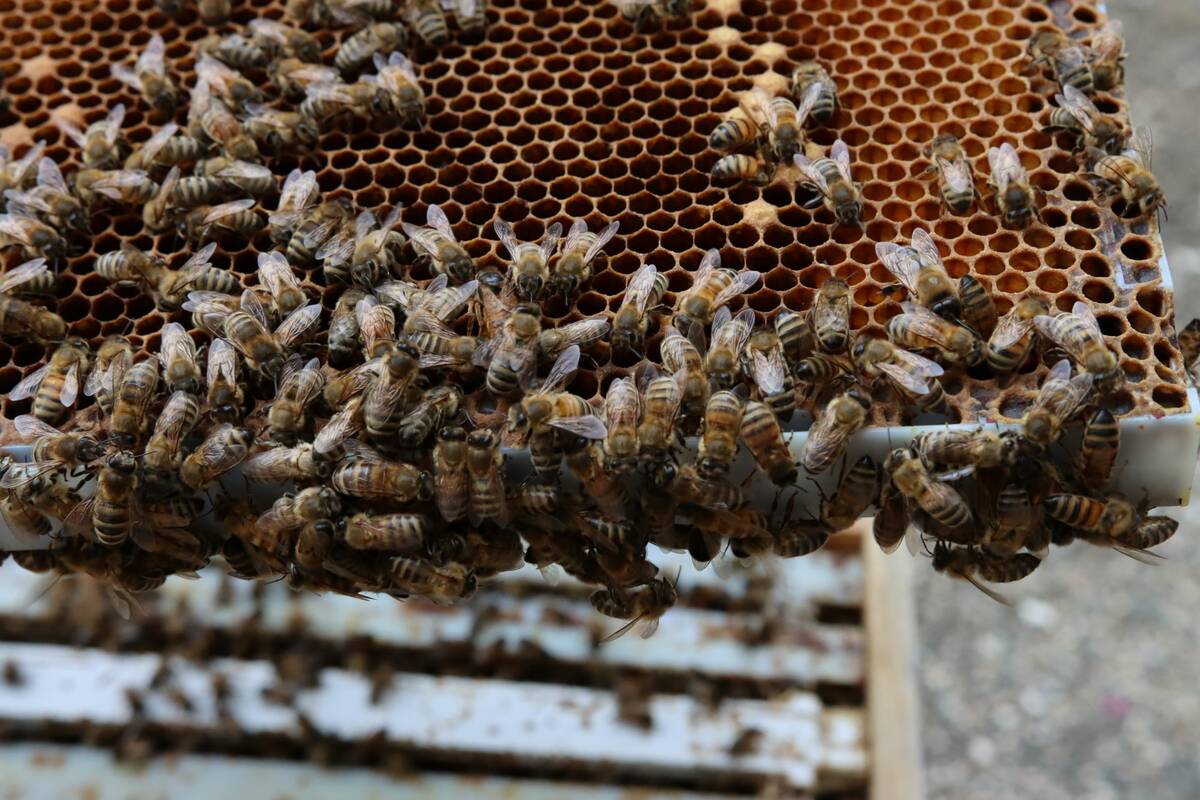
To qualify for the program, producers must be registered under Manitoba’s Bee Act and apply for coverage on at least 50 colonies. Beekeepers can choose between two coverage values: $205 or $310 per colony.
The program uses different survival rates depending on the beekeeper’s history with MASC. New participants have their policies calculated using the historic survival rate of 66.7 per cent, while those enrolled for two or more years receive rates based on their own operational experience.
Bee losses mount in Manitoba
The expansion follows another devastating winter for bee colonies. Updated numbers from Manitoba Agriculture earlier this year revealed a 43 per cent colony loss rate during the 2024-2025 winter, marking the fourth straight year the province’s honey sector battled poor winter survival rates.
Beekeeper and MASC board member Paul Gregory hopes that the improvements to the program will make a difference for producers who have been hit hard over the last few years.
“There’s been some guys in financial straits. It may be their last year of beekeeping,” Gregory said, adding that in almost all cases, varroa mites and their apparent growing ability to overcome chemical treatment lies at the heart of the issue.
“Mortality insurance is so important, and it’s going to stabilize the industry,” he added. “When you have a big loss … it doesn’t take long for that premium to pay itself.”
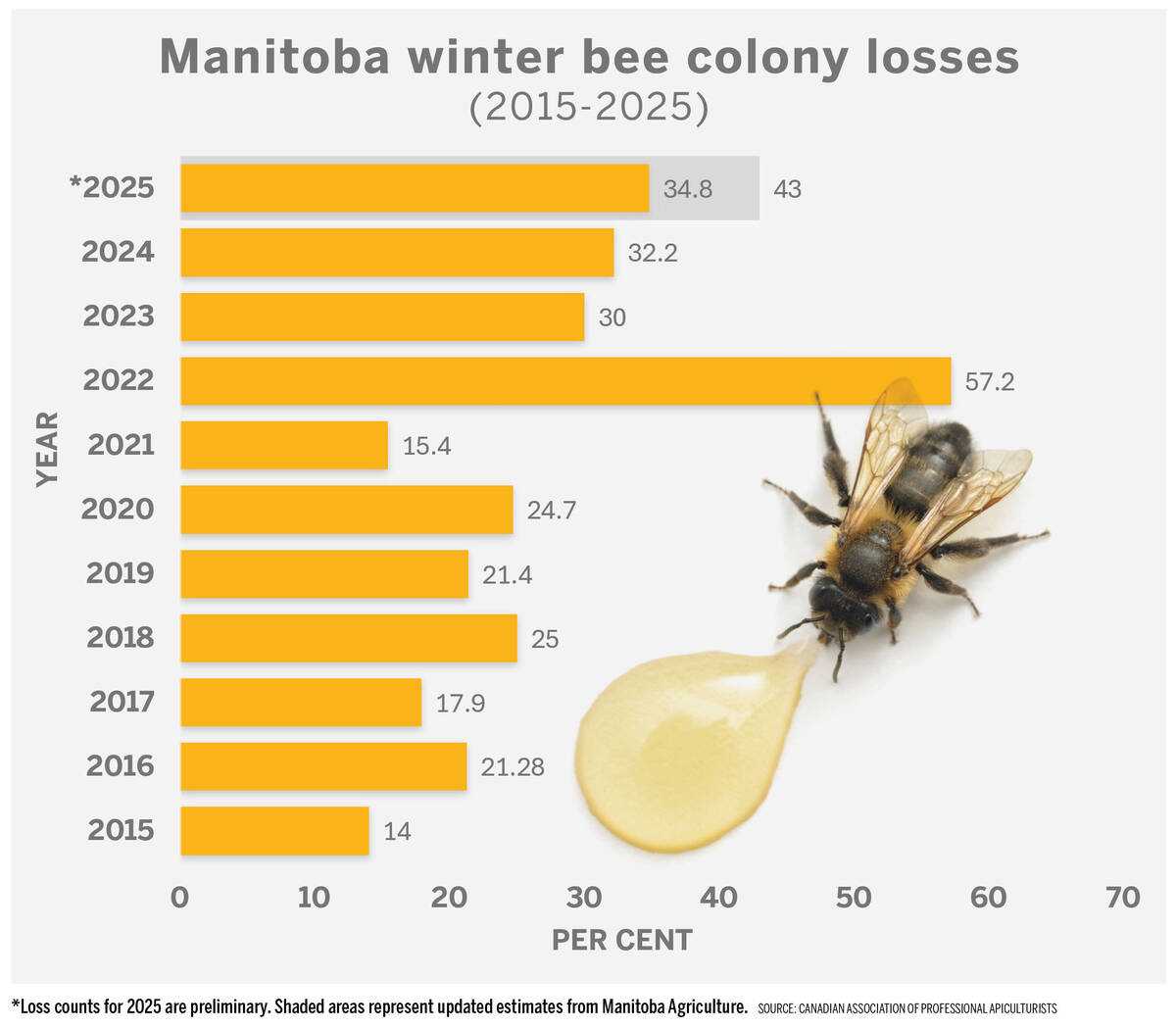
However, insurance coverage is just one piece of the puzzle.
“There seems to be a lot more extension on the crops and agronomy side,” Gregory said. “We are being supported, but it could be more.”
There are some new varroa mite tools being tested by beekeepers and academics in Canada and the United States, but Gregory worries it could be too little, too late.
“Guys could be out of business before they are approved,” he said.
Deadline coming
Beekeepers have a narrow window to take advantage of the enhanced coverage, with applications, changes, or cancellations due by Sept. 2.
“Typical deadline is Aug. 31, but in the instance where the deadline falls on the weekend, the deadline is pushed to the next working day,” Modrzejewski said.
With the Labour Day long weekend, that has pushed the deadline back this year.
Once hives are stored for winter this fall, beekeepers must declare their stored colonies to MASC by Dec. 1. Again, that date is typically the end of November, pushed back this year due to Nov. 30 falling on the weekend.


